Cancer rehab vital cog in recovery Therapy helps patients physically, emotionally
Read this article for free:
or
Already have an account? Log in here »
To continue reading, please subscribe:
Monthly Digital Subscription
$0 for the first 4 weeks*
- Enjoy unlimited reading on winnipegfreepress.com
- Read the E-Edition, our digital replica newspaper
- Access News Break, our award-winning app
- Play interactive puzzles
*No charge for 4 weeks then price increases to the regular rate of $19.00 plus GST every four weeks. Offer available to new and qualified returning subscribers only. Cancel any time.
Monthly Digital Subscription
$4.75/week*
- Enjoy unlimited reading on winnipegfreepress.com
- Read the E-Edition, our digital replica newspaper
- Access News Break, our award-winning app
- Play interactive puzzles
*Billed as $19 plus GST every four weeks. Cancel any time.
To continue reading, please subscribe:
Add Free Press access to your Brandon Sun subscription for only an additional
$1 for the first 4 weeks*
*Your next subscription payment will increase by $1.00 and you will be charged $16.99 plus GST for four weeks. After four weeks, your payment will increase to $23.99 plus GST every four weeks.
Read unlimited articles for free today:
or
Already have an account? Log in here »
Hey there, time traveller!
This article was published 03/02/2020 (2135 days ago), so information in it may no longer be current.
Surviving cancer is a huge feat. Living a happy, healthy and damage-free life afterwards is quite another.
The five-year survival rate has increased to 60 per cent today, compared with just 25 per cent in the 1940s, thanks to continuing advancements in cancer control and prevention, early detection and treatment.
Campaign aims to make cervical cancer history
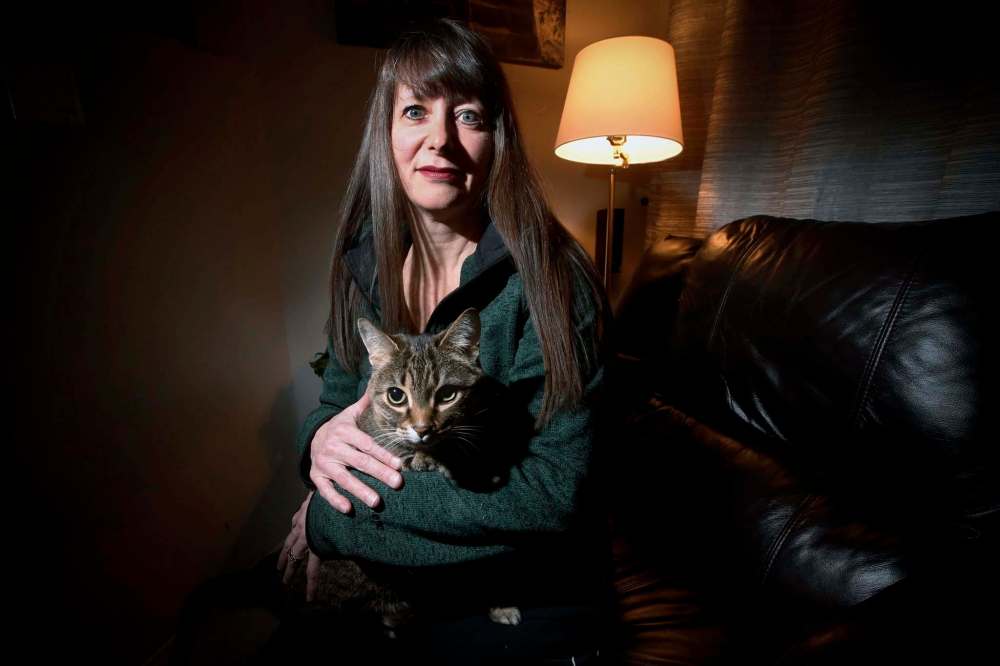
Posted:
It’s been a long and harrowing journey for Mary Schultz, one she would have preferred not to have taken.
Cancer care does not stop after the treatments end, though.
While many cancer survivors are able to recover quickly and return to their normal lives, many others suffer from extensive physical limitations and lingering side effects. These can include cancer-related fatigue (CRF), pain, nerve damage, lymphedema and neurocognitive impairments, as well as anxiety, depression and changes in relationships.
This can leave survivors at a loss. Their new reality interferes with their ability to work, engage socially and carry out simple daily tasks, such as preparing meals, bathing and dressing.
Denise Dreikluft, a physiotherapist for nearly 20 years, began her career in musculoskeletal physiotherapy. After a decade, she started helping people with disabilities and chronic conditions. It was during this time she began working with cancer patients.
“People go through cancer treatments, but once they’re discharged, they’re left with several side effects and symptoms that affect their quality of life,” she says.
A national study conducted by the Canadian Partnership Against Cancer in January 2018 polled more than 13,000 people who had completed cancer treatment. It found 80 per cent of patients reported physical challenges, 70 per cent had psychosocial challenges and 40 per cent experienced practical challenges, such as returning to work after their treatments ended.
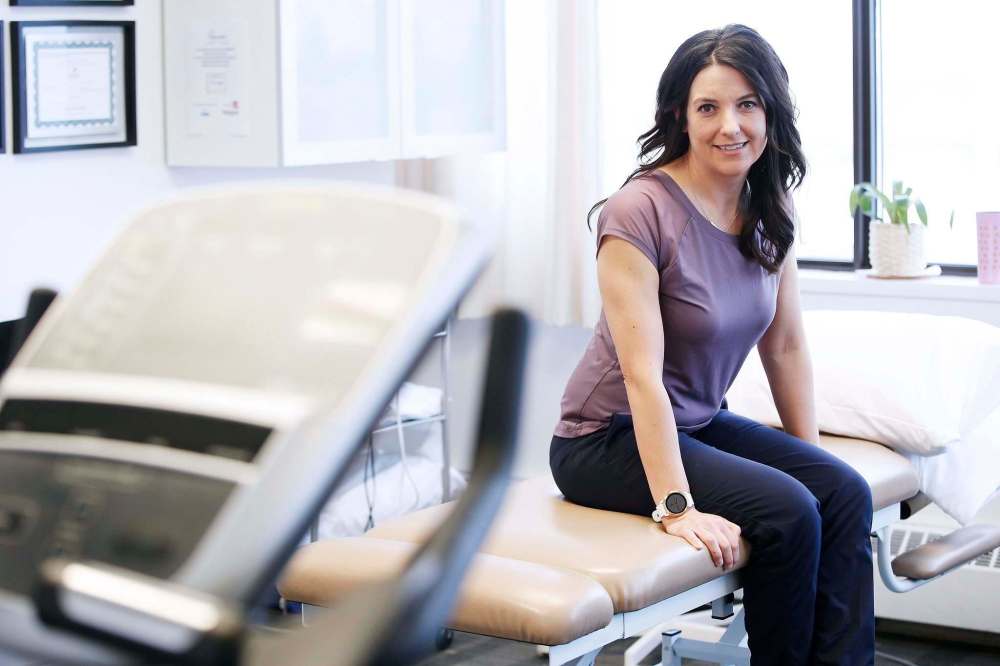
“We’ve all been affected by cancer. I’m no different; I’ve lost family members to cancer,” Dreikluft says. “Seeing first-hand that gap in care made me more passionate about helping people.”
Since 2016, Dreikluft has focused her physiotherapy career on cancer rehabilitation and helping people through exercise. She opened PhysioCARE+, a Winnipeg physiotherapy practice that focuses on oncology, in October 2019. Her clinic is one of the few in Manitoba dealing specifically with cancer rehab.
Cancer treatment is gruelling, leaving many people exhausted and weak. At times, just getting out of bed is difficult. And exercise? That can be overwhelming.
A 2017 issue of Canadian journal Current Oncology says screening to identify rehabilitation needs, combined with exercise, can improve the quality of life of cancer patients.
“My clients have had several things done to their bodies throughout treatments and now they’re actually in control of doing something for themselves.” – Denise Dreikluft
Dreikluft stresses the importance of exercise.
“Exercise increases perfusion (the passage of fluid through the circulatory or lymphatic system to an organ or tissue) and helps to minimize the risk of cancer recurrence,” she says. “There’s a huge benefit to people if they can exercise after treatments to help decrease the risk of mortality and other health-related concerns.”
Nearly one in two Canadians is expected to be diagnosed with cancer in their lifetime, according to a 2017 report by the Canadian Cancer Society.
“I’m not treating the disease or a diagnosis, I’m treating the person. Every cancer and treatment plan is different,” Dreikluft says. “Each person has different starting points and goals. I’m trying to increase and improve their quality of life.”
A common side effect of chemotherapy is peripheral neuropathy — numbness, tingling and pain in the feet or hands. For this, Dreikluft will work with clients on balance and co-ordination.
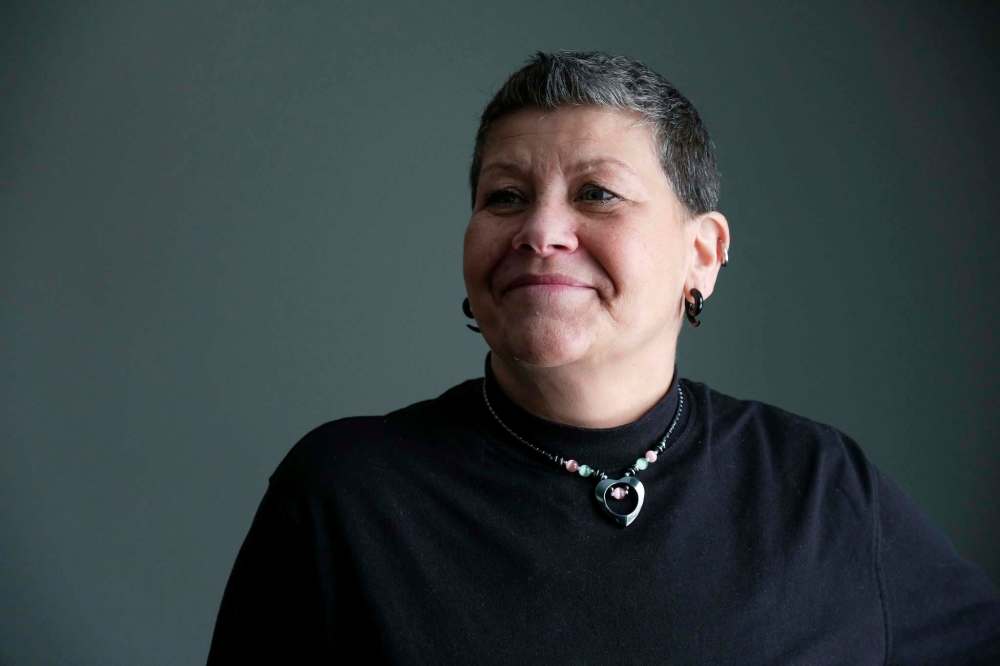
“I do a lot of work with balance discs and make an obstacle course we call ‘Winnipeg winter training.’” she says. “We go over things and on uneven surfaces. It makes a big difference.”
Returning to work is a common goal, Dreikluft says, and a high percentage of survivors have difficulty with it, often owing to fatigue and cancer-related cognitive impairment.
Nicolette Fischer is one of Dreikluft’s clients. She was 54 in July 2018 when she was diagnosed with Stage 3 ovarian cancer, after noticing her belly had become distended.
“When I say distended, it looked like I was nine months pregnant,” she says.
Upon receiving her diagnosis, one of Fischer’s concerns was whether she’d be able to return to work at St. Amant. She felt helpless.
“I was anxious I wouldn’t be able to support myself and continue helping my son through school,” she says. “My biggest worry is that my son would be left alone.”
“My regret was not starting (with Dreikluft) sooner after treatment.” – Nicolette Fischer
Fischer says Dreikluft helped her remain optimistic about returning to work.
“Denise helped get my strength back, both physically and mentally, in that I feel very confident that I can eventually return to work full time,” she says. “She never doubted my ability to return to work, so I didn’t either.”
Fischer underwent three rounds of chemotherapy prior to her hysterectomy in November 2018. Following her operation, she started chemo again a month later and continued weekly until the end of April 2019.
Chemotherapy left her feeling nauseated and lethargic after every session.
“My hair started to fall out after the second treatment. And due to low energy, I spent too much time sitting,” Fischer says. “All that sitting caused my muscles to weaken and become less flexible, as well as tendinitis in both hips. Then there’s the neuropathy in both feet and weakened hands and wrists.”
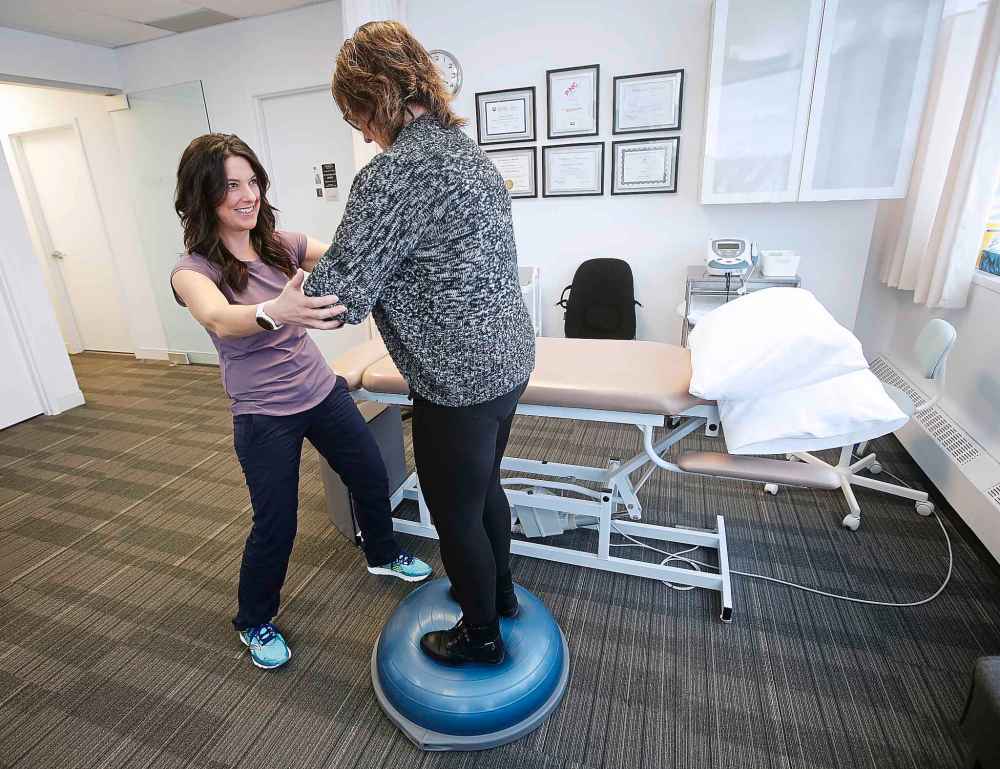
Research and fundraising are critical aspects in fighting the disease. In the most recent fiscal year, the CancerCare Manitoba Foundation provided $7.53 million to support CancerCare Manitoba’s priorities — this included 55 per cent to research and education, 14 per cent to clinical trials, 28 per cent to patient experience, support and training, and three per cent to prevention, risk reduction and awareness.
“CancerCare is excellent. They met with me and gave me lots of information,” Fischer says. “It was overwhelming, especially if you haven’t been ill before. The staff are incredible and explained every step of the process.”
Fischer started seeing Dreikluft for rehabilitation in October 2019. At her first appointment, she could barely do eight minutes on a stationary bike. Now, almost two months later, she can ride for more than 30 minutes at a higher tension.
“If I have a weakness in an area, she adds a new exercise. You know she wants the best for you,” Fischer says. “Denise takes the time to explain why a muscle hurts a certain way and keeps you motivated.”
Dreikluft, a level-2 certified clinical cancer exercise specialist through the University of Northern Colorado, also received a 2019 scholarship to Pinc & Steel, a New Zealand-based organization that provides cancer awareness and education to physiotherapists and occupational therapists worldwide.
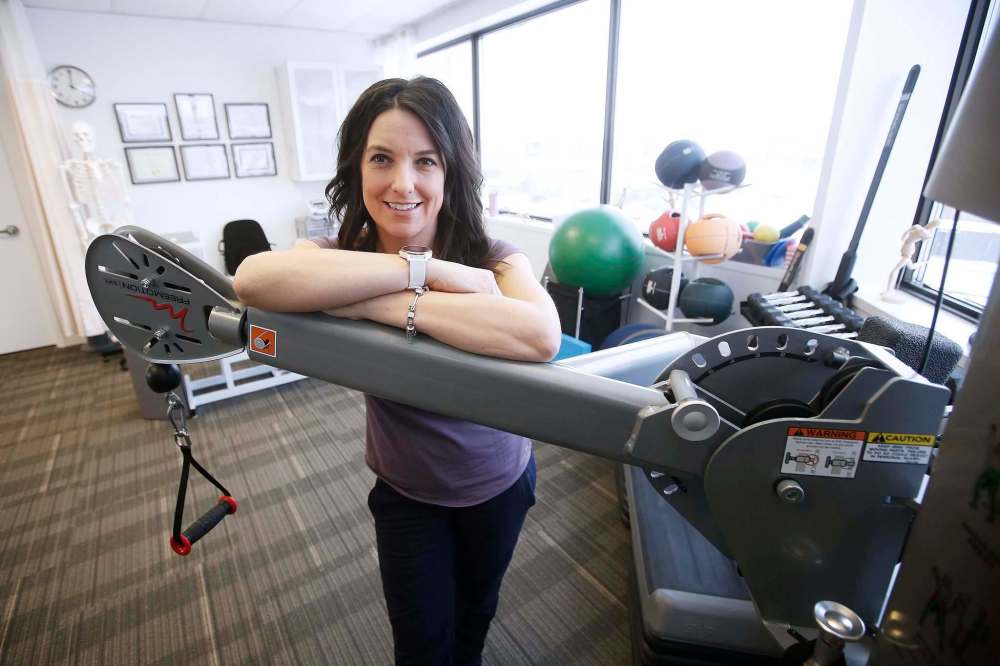
Fischer has begun the process of returning to work. The work she’s done with Dreikluft has helped her manage pain and regain strength.
“Denise gave me a stretch that helped with the tendinitis. Now, I can bend to the floor, climb stairs, carry groceries and have a social life without being tired,” Fischer says. “And I don’t worry about whether I will have enough energy to do things.”
“My regret was not starting (with Dreikluft) sooner after treatment,” Fischer says.
Rehabilitation for cancer survivors is similar to that for other conditions, such as a heart attack or stroke, and evidence shows the benefits of cancer-specific rehab for quality of life and physical functioning.
Dreikluft says exercise can seem counterintuitive — when people are tired the last thing they want to do is exercise.
“My goal is to graduate my clients to community classes and gyms because we want to keep up that momentum.” – Denise Dreikluft
“That’s where it becomes important when prescribing the right amount and progression to help people be consistent and successful,” she says. “My goal is to graduate my clients to community classes and gyms because we want to keep up that momentum.”
Exercise isn’t just beneficial for physical needs — it also has a big impact on mindsets.
“My clients have had several things done to their bodies throughout treatments and now they’re actually in control of doing something for themselves,” she says. “It gives them confidence. They’re regaining strength, recovering and seeing progress, which does wonders for somebody’s state of mind.”
Last fall, the American College of Sports Medicine released new recommendations about the benefits of exercise for cancer prevention, treatment, recovery and improved survival. They include incorporating exercise to help improve survival after a diagnosis of breast, colon or prostate cancer.
For Dreikluft, cancer rehabilitation is an essential part of cancer care.
“To be able to give people hope that they can improve, and then actually see that process happen, is inspiring,” says Dreikluft. “I feel very grateful that I have the privilege to help my clients along their journey and regain that quality of life.”
sabrinacarnevale@gmail.com
@sabrinacsays

Sabrina Carnevale is a freelance writer and communications specialist, and former reporter and broadcaster who is a health enthusiast. She writes a twice-monthly column focusing on wellness and fitness.
Our newsroom depends on a growing audience of readers to power our journalism. If you are not a paid reader, please consider becoming a subscriber.
Our newsroom depends on its audience of readers to power our journalism. Thank you for your support.








